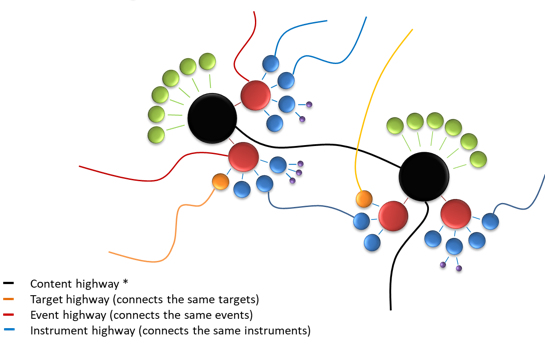In our quest to understand and replicate the cognitive capabilities of the human brain, the AI discipline has focused on the subject of learning rather unevenly. Regardless of the non-scientific reasons, I felt compelled to raise awareness of the most important 3 components of learning mainly distinguished by the “time” factor. Evolutionary, Experiential, and Instant learning. Without taking into account all 3 forms of learning, it is unlikely to achieve ambitious goals in AI regardless of how much computing power, or data collection is available to us. The diagram below summarizes this concept.
EVOLUTIONARY LEARNING
When a wildebeest calf is born, it takes only a few minutes for her to run fast enough to escape from predators. It is obvious, evolution has hard-wired some of its learning in the blue print of a new born calf in terms of motor skills. Evolutionary learning is also obvious from the distinct regions of a biological brain which is almost always utilized in a predetermined manner. We can argue that human specie has developed a unique neuron structure suitable for language and logic in response to survival pressure through evolution. If this is true, then the idea of “linguistic neuron” could be what separates us from animals.
Has human specie developed language sensitive neurons in the brain through an evolutionary process so that some neurons take on linguistic roles?
Evolutionary learning is like a factory setting, initial condition, or starting assumptions of any model we want to build for specific learning task. This initial condition step is what is missing in today’s deep learning methods.
EXPERIENTIAL LEARNING
Once a biological system is born, experiential learning starts along with the growth of the brain. In case of humans, many activities like walking, speaking, learning how to ride a bicycle, or playing piano fall into this type of learning where repetition is the key. Today’s deep learning methods heavily focus on this model using artificial neural networks. Unfortunately, the network types and learning algorithms do not start from any biological inspiration, and there are no initial assumptions targeted to a certain type of learning. Consequently, most applications turn into a nonlinear mapping exercise rather than modeling a real learning process.
INSTANT LEARNING
One of the most obvious, yet mysteriously ignored form of learning is instant learning. In case of humans, cognitive activities like reading, conversing, deducing, summarizing, abstracting, and conceptualizing require very small number of iterations to learn. If you ask directions on the street, repeating it twice would be more than enough to learn it. If we are studying a subject, we may have to read it a few times. That is instant learning. You cannot replicate this type of learning using today’s deep learning methods. Assuming the evolutionary learning has yielded a hard-wired design of linguistic neurons, we are experimenting with instant learning at exClone with promising results. In applications involving natural languages and human like dialogue, we believe that the 3 forms of learning is essential to complete the picture. More details are in my previous article about instant learning.
One of the examples that I have come across recently is the RBF learning which is another form of instant learning without mentioning the arguments described above. Their point of departure in RBF Learning is the industrial demand for instant learning systems.
If you know a new learning algorithm relevant to the arguments above, please mention it in the comments below.
——————————————-
This article is brought to you by exClone, a Virtual Expert & Chatbot technology provider.
Join CHATBOTS group in linkedIn.
You can follow exClone in Facebook, and in LinkedIn.
#instantlearning #deeplearning #chatbots #conversationalAI #AI #ArtificialIntelligence #ML #DL #Machinelearning #exclone #virtualexperts #NLP #humandialoguetheory



